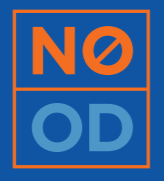A promising overdose prevention model in southern California that distributes naloxone to at-risk populations and engages vital stakeholders that represent sectors that should be carrying naloxone
The Ventura County Overdose Prevention Program, or “No OD Project”, was launched as a pilot program in October 2014 at six county facilities as part of the community response by an opioid working group in the county. The project uses a targeted naloxone distribution strategy to get the overdose antidote, as well as overdose education, to those that are at high risk for an opioid overdose.
Since the pilot, the program has expanded to 33 distribution sites across the county and has established multi-agency collaborations to become more integrated in the community. The project has also expanded to training and distributing naloxone to first responders. Data collection strategies were implemented during the pilot, so robust evaluations are available that measure the program’s reach and outcomes.
More information on the program can be found in this evaluation and this report.









